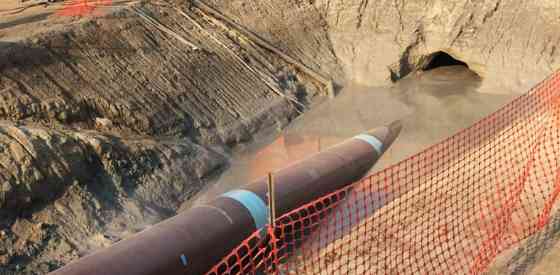Within the rapidly changing landscape of the oil and gas industry, directional drilling has emerged as a revolutionary technique that goes past standard drilling methods. Comprehending the nuances of directional drilling is essential for those interested in the complexities of resource extraction, infrastructure installation, and including sustainable energy projects. This thorough guide aims to explain the idea of directional drilling, making it approachable for beginners while also delving into its tech advancements and various applications across industries.
As projects become more complex and urban infrastructure continues to grow, the requirement for novel drilling solutions has never been greater. Directional drilling offers a unique approach that minimizes surface disruption and enhances productivity, making it a popular choice for many professionals. If you want to know about how directional drilling operates, its benefits for the environment, or the future trends shaping this technology, this article will furnish you with key information and a broader perspective of the central role directional drilling plays in today's industrial landscape.
Grasping Directional Drilling Drilling
Directional drilling is a technique used to establish bore holes that stray from the vertical path, allowing for the exploration and extraction of resources from different angles. This approach improves the overall performance of drilling operations, allowing entry to deposits that would if not be hard or infeasible to reach with traditional vertical drilling methods. By steering the drill bit along a set path, directional drilling enhances material recovery and minimizing ground disruption.
The technology has advanced significantly in recent years, integrating cutting-edge machinery and methods to boost correctness and efficiency. Equipped with Vacuum Excavation Ireland -of-the-art tools such as mud pumps, drill bits, and tracking systems, directional drilling permits operators to carefully design their well paths. As a outcome, companies can maneuver through intricate geological layouts and adjust to diverse subsurface conditions, ultimately enhancing project results and lowering costs.
In addition to the petroleum sector, this method of drilling has applications in multiple sectors, like utility installation and renewable energy projects. This versatility positions it an essential tool for today's infrastructure projects. Its competence to minimize environmental effects and inconvenience to the surface renders this method of drilling a preferred choice for projects in metropolitan areas and delicate locations.
Benefits of Directional Drilling

Directional drilling offers many benefits over traditional straight drilling techniques, making it a popular selection in various industries. One key benefit is its potential to access oil and gas deposits that are otherwise difficult to obtain. By boring at angles and across flat levels, directional drilling allows teams to tap into several well sites from a sole access site, substantially increasing the productivity of asset harvesting. This capability not just enhances production levels but also improves the overall use of drilling rigs and related tools.
Moreover important advantage of directional drilling is the minimization of surface disruption. Since the method permits excavation from a single site, it reduces the natural impact by keeping the surface area and environment disturbance to a small level. This is particularly advantageous in vulnerable locations, such as city zones or close to aquatic environments, where conventional drilling techniques would create significant surface disruption. The potential to excavate under hurdles and through different landscapes allows for greater conformity with ecological regulations and local concerns.
Cost cutbacks are also a vital advantage of directional drilling. The capacity to coordinate various excavation operations from one location lowers travel time and excavating costs, ultimately leading in reduced overall project outlays. Furthermore, the efficiency gained through directional drilling approaches translates into minimized labor needs and quicker project completion times. As industries work to find harmony financial feasibility with green practices, directional drilling presents a enticing option that boosts output while being considerate of the surrounding ecosystem.
Future Developments in Directional Boring
As the oil and gas industry continues to evolve, the future of horizontal drilling is set for significant progress. Innovations including robotic boring rigs and smart drilling technologies are making it feasible to attain increased precision in drilling. Such technologies utilize real-time data analytics and AI learning to optimize operational parameters, leading to greater efficiency and lowered costs. The integration of machine AI is not only improving drilling accuracy but also facilitating predictive maintenance and reducing downtime.
In addition to technological advancements, the emphasis on eco-friendliness is driving the transformation of directional boring practices. As ecological issues increase, the sector is adopting more eco-friendly drilling fluids and methods. Directional drilling is particularly advantageous in fragile locations, where minimizing surface impact is essential. The integration of sustainable power sources and green infrastructure projects will further expand the applications of directional drilling, contributing with global initiatives to reduce the greenhouse gas emissions.
Finally, the technological shift of the sector is transforming how directional boring tasks are planned and carried out. Improved software and sensor technologies are optimizing bore tracking, monitoring technologies, and data handling. This shift also streamlines processes but also facilitates better collaboration and coordination among project members. As the field continues to advance, training programs will be essential for preparing the next generation of horizontal operators with the expertise needed to thrive in this quickly evolving landscape.
